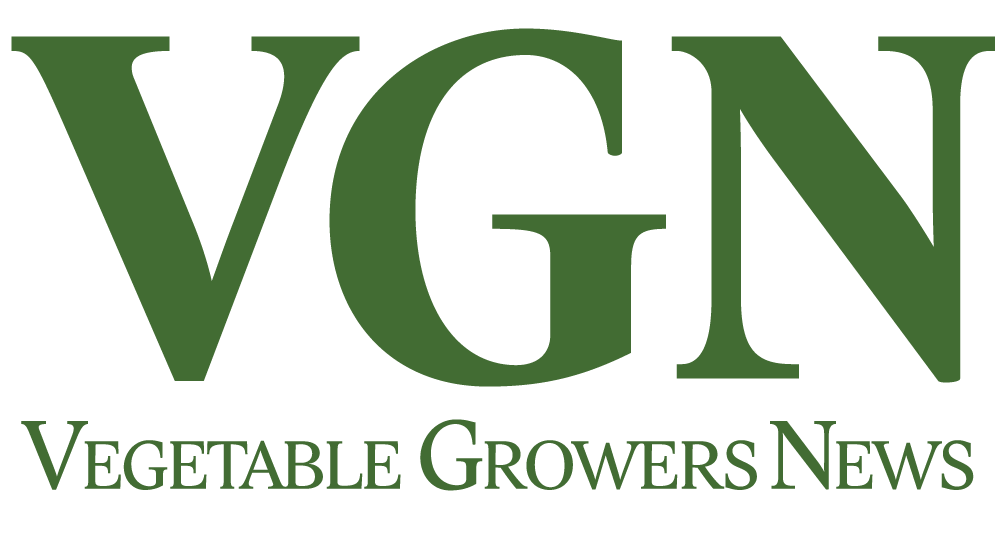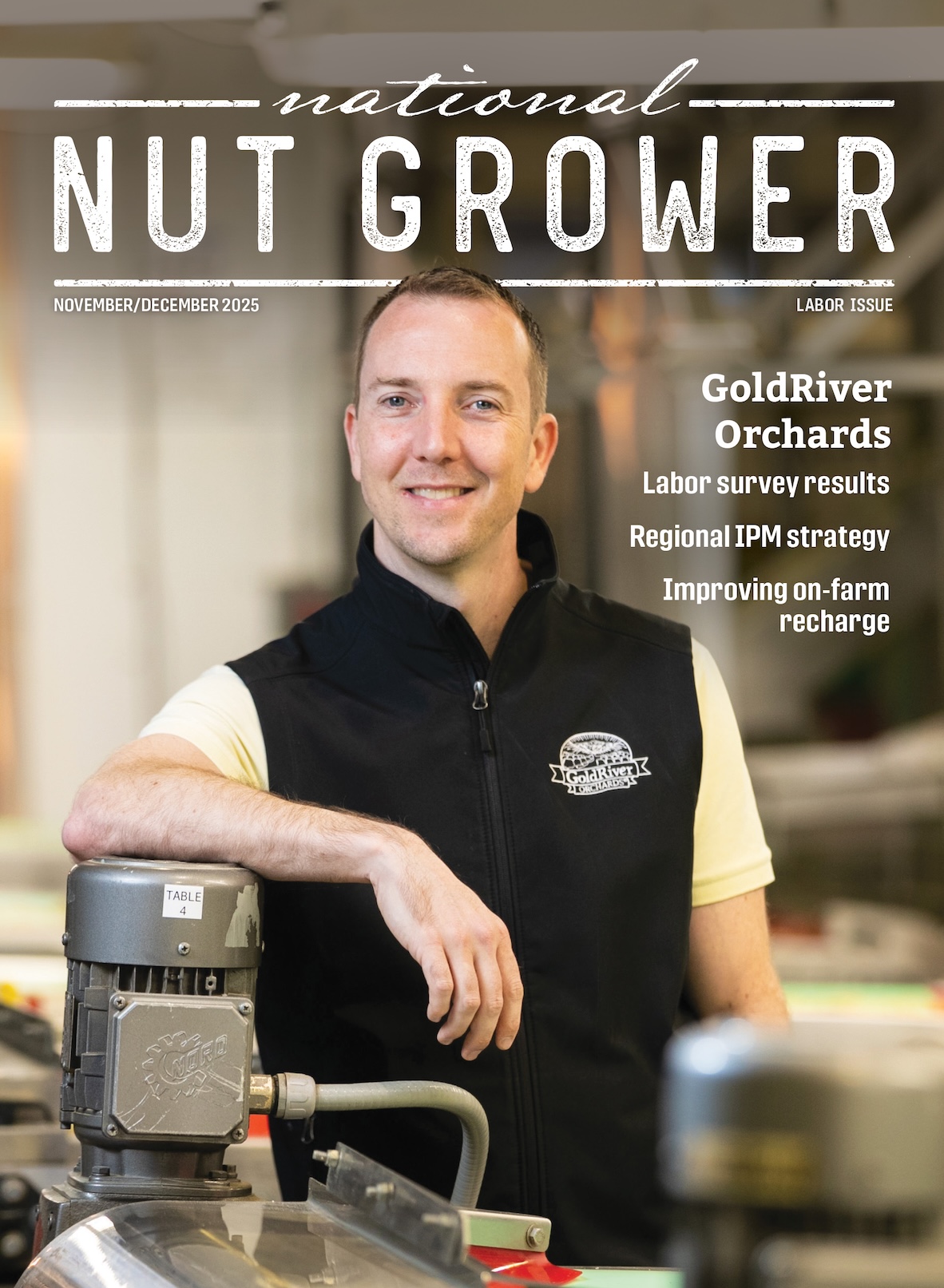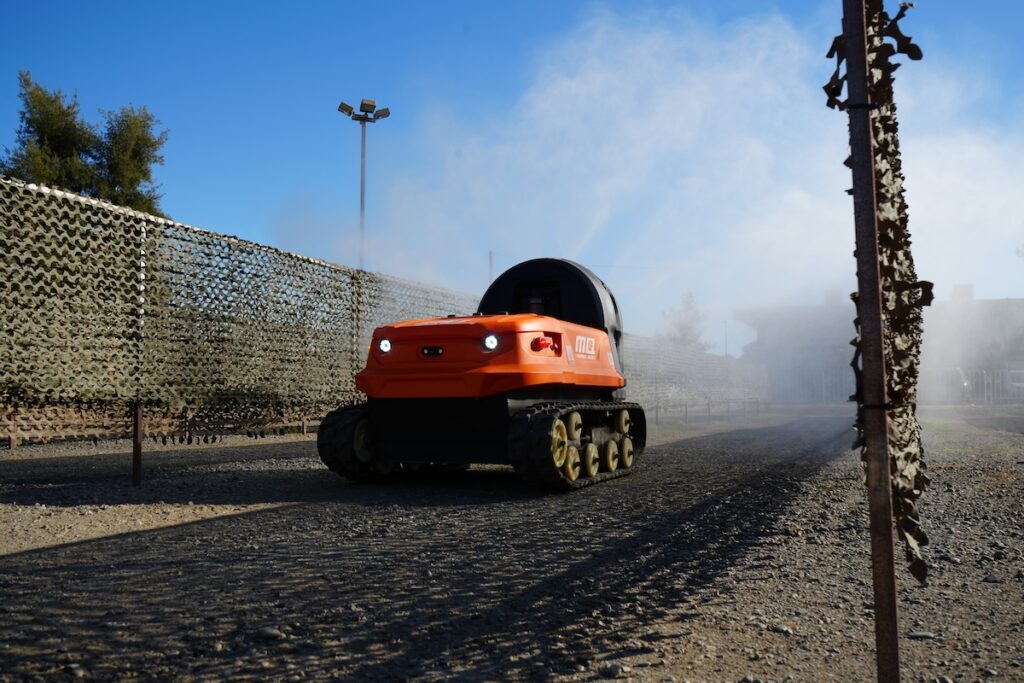
September/October 2025
FIRA USA robotics conference returns
The fourth edition of the International Forum of Agricultural Robotics, or FIRA USA, brings new ways growers can learn about farm automation and interact with technology providers to help them better run their operations.
 Scheduled for Oct. 21-23 in Woodland, California, FIRA USA will offer growers a window into the state of specialty crop robotics and automation. The event, to be held 11 miles from the Sacramento International Airport, is designed to provide growers of tree fruit, grapes, berries, nuts and vegetables and industry personnel the opportunity to view new agricultural technology being used in the global agrobotics sector.
Scheduled for Oct. 21-23 in Woodland, California, FIRA USA will offer growers a window into the state of specialty crop robotics and automation. The event, to be held 11 miles from the Sacramento International Airport, is designed to provide growers of tree fruit, grapes, berries, nuts and vegetables and industry personnel the opportunity to view new agricultural technology being used in the global agrobotics sector.
“FIRA USA 2025 will showcase a range of autonomous solutions addressing today’s critical labor shortages and profitability challenges, from commercially available equipment already operating in fields to innovative prototypes nearing market readiness,” said Gwendoline Legrand, FIRA and GOFAR co-director. “This unique event will feature a diverse spectrum of technologies, offering adaptable and varied field conditions for growers to evaluate both current and emerging autonomous agricultural equipment.”
This year’s highlights include:
- 35+ robots with in-field demos in real conditions for specialty crops
- 80+ exhibitors
- 2,500+ attendees
Berries, tree nuts additions
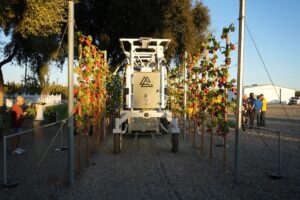 Last year, tree nuts were added to the show’s crop portfolio. This year includes a bigger emphasis on berries. The berries expansion is a response to expectations from major players in the sector, including Driscoll’s, Legrand said.
Last year, tree nuts were added to the show’s crop portfolio. This year includes a bigger emphasis on berries. The berries expansion is a response to expectations from major players in the sector, including Driscoll’s, Legrand said.
The addition of nut trees was successful, reflecting the growing demand for automation in almonds and other tree nuts. California growers face significant labor and efficiency challenges, and automation is seen as a key solution to yield management and cost reduction, she said.
The increasing involvement of institutions like the Washington Tree Fruit Research Commission and Almond Board of California highlights how critical automation has become for tree fruit and nut growers, Legrand said.
“Their participation not only allows growers to bring their voices to the stage and actively join the debate but also provides them with access to the latest robotic solutions on the market while giving manufacturers a clear understanding of growers’ real needs,” she said. “Growers can expect tailor-made sessions addressing their specific needs — whether for almonds, tree fruits or berries — with practical insights, field-proven technologies and direct feedback from early adopters.”
Tech to grower
New this year is a dedicated VIP Growers Experience, a customized program designed around growers’ automation needs. The program will guide growers through autonomous solutions that best fit their operations, combining in-field demonstrations, peer-to-peer exchanges with fellow growers and personalized meetings with manufacturers, Legrand said.
“The idea is to go far beyond traditional conferences by offering farmers a program designed specifically around their automation needs,” she said. “It’s a unique opportunity for growers not only to discover technologies already delivering results but also to share their challenges directly with the people building these solutions, ensuring that the next generation of ag robotics truly meets their needs.”
For the first time, an R&D Day has been designed to highlight the growing importance of agricultural robotics innovation and research.
Similar to previous shows, the Open Innovation Day will be organized in close collaboration with University of California Agriculture and Natural Resources (UC-ANR) and feature panel discussions on leading automation and ag robotics topics.
In addition to existing orchard, vineyard and vegetable plots, this year’s Demo Zones will be upgraded with the addition of tomato and cotton fields, providing a broader representation of specialty crops.
Robotic experience
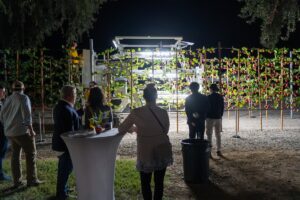 “Attendees can experience robots at every development stage, from prototypes to fully commercial systems, with live demonstrations on real crops, trees and vines,” Legrand said.
“Attendees can experience robots at every development stage, from prototypes to fully commercial systems, with live demonstrations on real crops, trees and vines,” Legrand said.
By boosting the diversity of crops shown and the range and depth of demonstrations, FIRA aids growers in finding appropriate technologies for their farm, she said.
“It’s more than just watching machines: growers can meet manufacturers face-to-face, explore full programs of demos, review detailed robot spec sheets, and even interact during pitch sessions and awards that bring together startups and investors,” Legrand said. “With improved demo infrastructure and personalized paths to discovery, the event maximizes both learning opportunities and dealmaking chances.”
Industry roundtables — introduced at last year’s show — were successful, generating strong grower interest. Grower session participation increased 53% from 2023, demonstrating growers’ growing appetites for discussions focused on automation and practical solutions, she said.
By identifying specific automation requirements for each commodity and providing practical feedback and use cases directly from growers, the roundtable sessions played a key role in laying the groundwork for a deeper understanding of the sector’s needs, Legrand said.
“This exchange of experiences has proven essential in bridging the gap between growers and technology providers, shaping more relevant and effective robotic solutions for the industry,” Legrand said.
For the second year, a 12-stop tour across the Sacramento, Salinas and Central valleys will show participants field demos, grower testimonials and tech in use, Legrand said.
This will be the second consecutive year FIRA USA has been in northern California. Read more about the FIRA USA show online.


